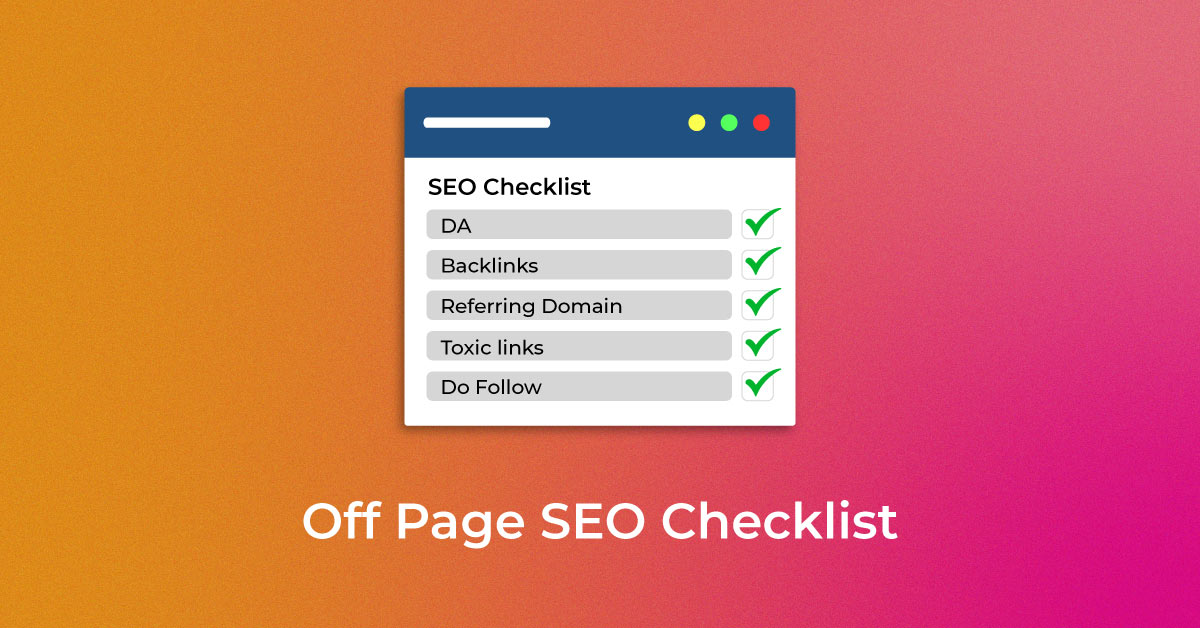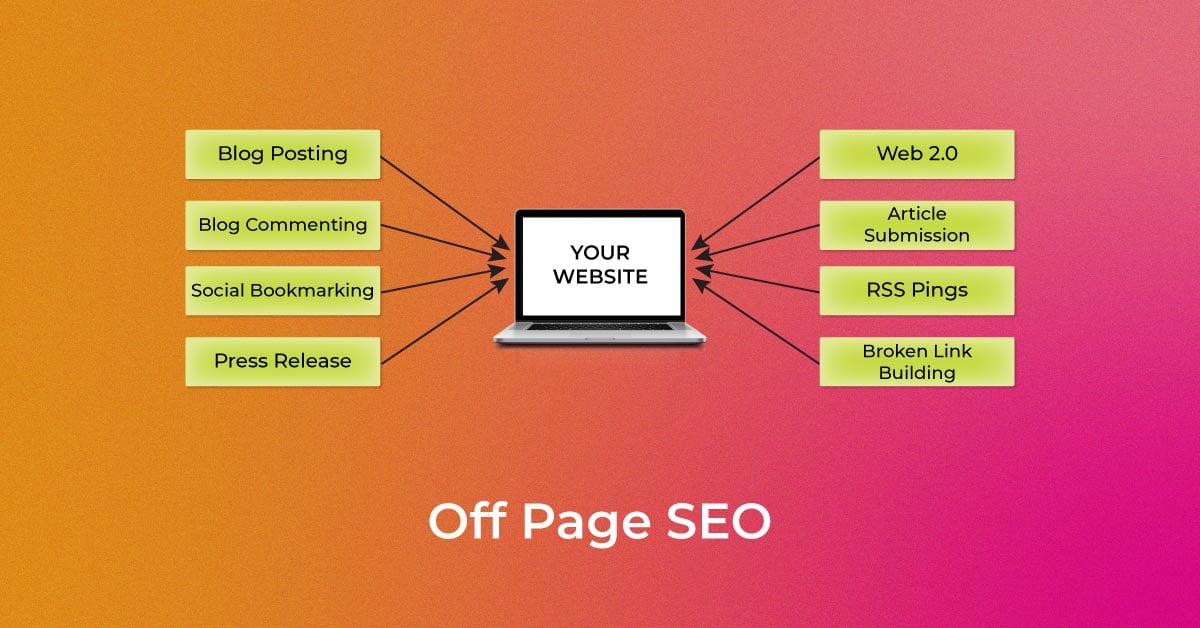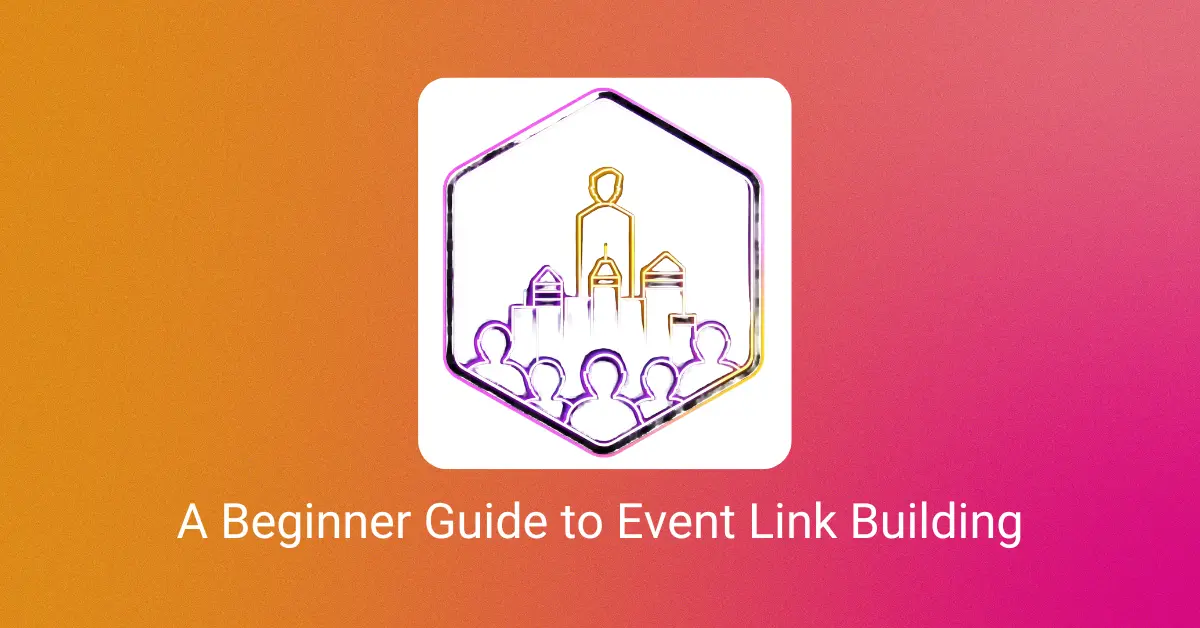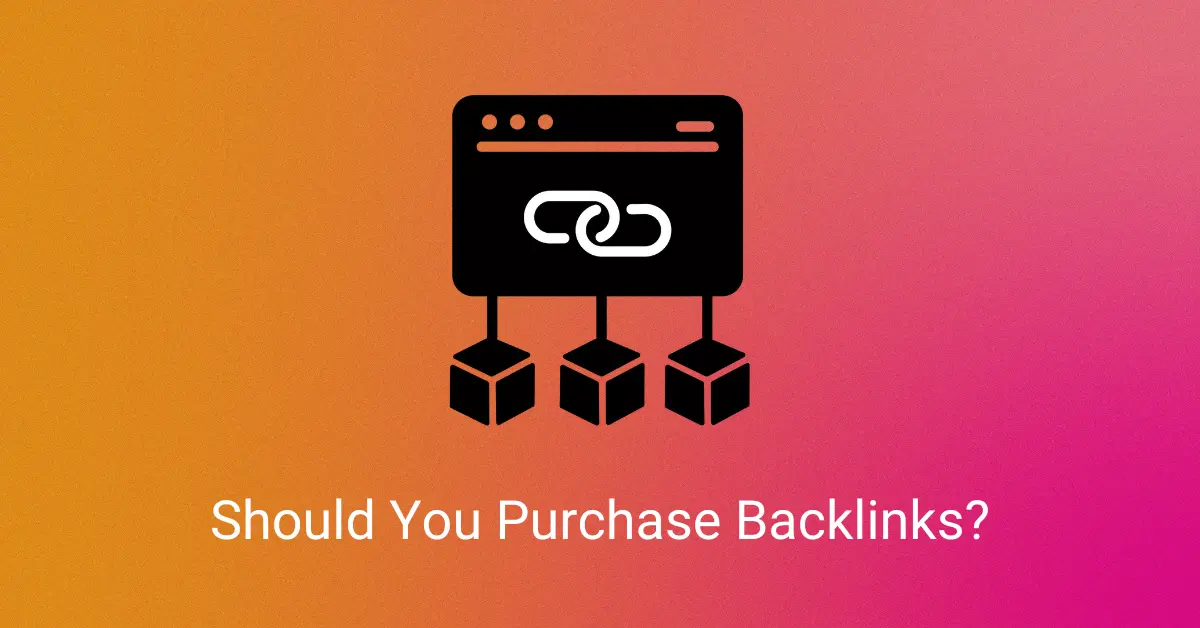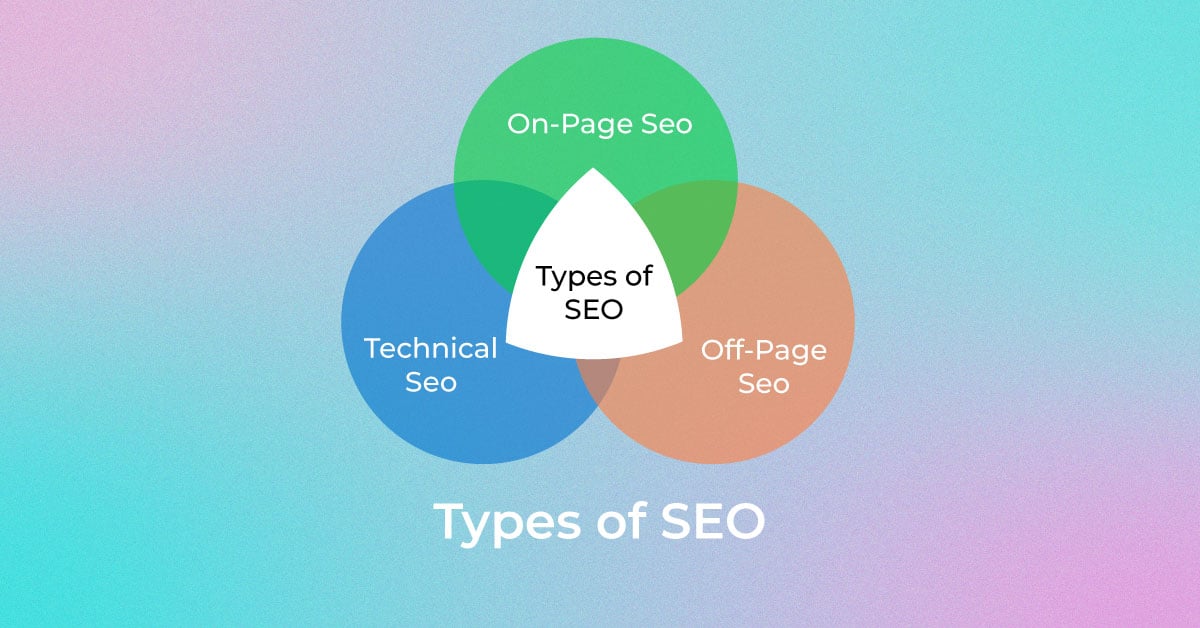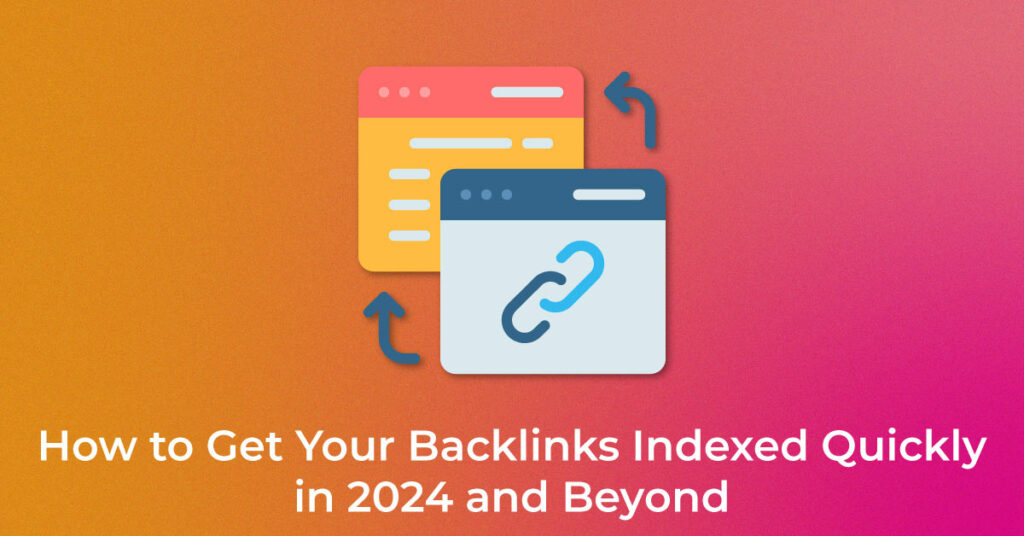Backlink creation is a critical part of any SEO campaign. If you’re a junior or manager-level SEO professional, you might wonder why getting your backlinks indexed is important. SEO professionals know how frustrating it can be when backlinks go unnoticed by search engines.
Just as we want Google to display all our web pages in search results we also need search engines to acknowledge and include our backlinks in their index for significant SEO benefits.
In this article, we’ll discuss how to ensure your backlinks are indexed, as well as how to optimize them in detail.
What is a Backlink in SEO?
Backlinks serve as a vote of confidence, earned through link building from one website to another. They contribute to the credibility and trustworthiness of the linked website’s content. Search engines, including Google, view backlinks as a significant ranking factor. The quality and relevance of these backlinks indicate to search engine crawlers that the content on the linked website is valuable and authoritative. Essentially, backlinks function as endorsements, signaling that the linked content is reliable and worthy of reference.
What is an Indexed backlink?
As you may already know about Backlinks, Link building, and more it’s important to grasp how backlink indexing works and know more about its functionality.
Search engines, like Google, employ automated programs called spiders to explore the internet in search of web pages. These pages are then added to their search database or index so that they can be found when someone searches for topics.
These bots also investigate websites to discover backlinks. Based on the information gathered from these backlinks Google determines which sites should rank higher in search results for queries.
So what is an indexed backlink?
An indexed backlink is a link that has been included in the search engine’s database and is ready to appear in search results.
When a search engine like Google indexes your backlinks it sees them as valuable and trustworthy. This factor enhances your SEO ranking and improves your website’s visibility in search results. Simply put having indexed backlinks is beneficial for your website’s credibility and visibility.
However, the speed at which Google accomplishes this depends on factors such, as site structure, domain age, and content quality. This article also outlines the factors that affect the indexing of backlinks.
As we mentioned before it can take a varying amount of time from a days to months for Google to index your backlinks. It’s important to note that unless search engines acknowledge your backlinks they won’t have an impact, on your SEO efforts.
Why Is Backlink Indexing Important?
Backlink indexing plays a role, for reasons.
- Discovery of New Web Pages and Content: We know that Google bots actively search for web pages daily and they rely on links to identify these pages. So when backlinks are indexed it helps search engine bots discover web pages and content on your website. By finding these pages the Google bot may crawl your web pages frequently giving you increased visibility and a wider reach.
- Indexed Backlinks Enhance Authority and Visibility: When backlinks are indexed it gives your website a boost by making it more visible in search results. However, if backlinks are not indexed search engine bots may struggle to determine where to rank your website. As a result, you won’t be able to enjoy the SEO benefits, from these backlinks.
- Driving Organic Traffic: Indexed backlinks can drive traffic to your website because search engines can discover your website through these backlinks that appear in search results.
How long does it take for Google to index backlinks?
The time it takes for backlinks to be included in search engine indexes can vary based on various factors. Additionally, it can take anywhere from a few hours to around 10 weeks or even longer for a new backlink to be added to Google’s index. However, this is a timeframe and the process can be either fast, slow, or possibly not happen at all.
Some factors influence how Google indexes backlinks and where they appear in search results. Let’s explore some of the elements that impact the indexing of backlinks.
- Domain age; The age of the domain that links to your website plays a role. Older domains tend to get indexed by Google.
(Please note: Domain age is not used by Google as a signal, so purchasing domains will not help your webpage or website rank higher or get indexed faster.) - Reputation of the linking site; Obtaining links from high-authority websites is important as it helps establish authority for your website. Backlinks from sites frequently visited by search engine bots increase the likelihood of indexing. Conversely obtaining links, from quality or spammy sites may result in indexing or potentially no indexing at all.
- Crawling Frequency; Different search engines, such, as Google and Bing regularly explore the internet to discover and list web pages alongside their backlinks. However, the frequency at which they visit websites can vary. Reputable and well-established sites that frequently update their content are more likely to be visited resulting in faster inclusion of backlinks from these sites in search results.
- Submission Method; The method you choose for submitting your backlinks is believed to have an impact on indexing speed. Manual submission of links through tools like Google Search Console (GSC) may take longer to be indexed compared to using automated backlink indexing services or tools.
- Website Size & Complexity; The size and complexity of your website also play a role in determining the speed at which backlinks get indexed. If your site has several pages or a complex layout search engines may require time to crawl and index everything, including your backlinks. Additionally, issues such, as content or canonical problems can further delay the indexing process.
Misconceptions about Backlink Indexing
Let’s delve into the misunderstandings surrounding backlinks. When we claim that our “backlink is not being indexed ” it’s not entirely accurate. To address this issue effectively it’s important to rephrase it as “the page that contains our backlink’s not being indexed.” We should keep in mind that search engines, like Google and Bing function as web explorers. They visit web pages. Add them to their index. This does not apply to links.
Search engines do not index links be it a backlink, link, or any other type of link; they primarily focus on indexing pages. Therefore when you encounter this problem remember that it’s not the backlink itself but the page where the link resides that may not be getting indexed. The key lies in ensuring that the page hosting your link is visible to search engines.
6 Reasons Why Your Backlinks Pages are Not Getting Indexed
Now let’s dive into the reasons why the page, with your backlinks, may not be getting indexed. Like your website, there can be factors affecting the indexing of the page where your backlinks are located. Let’s explore a list of causes behind this issue and understand these points along with their solutions.
- Page missing in the website’s sitemap: If the page containing your backlink is not included in the website’s sitemap, it can lead to indexing problems. However, it doesn’t mean you should manually add the backlink page to the sitemap. This situation often occurs with websites that update their sitemaps infrequently. In case you can kindly remind the webmaster to include that page in their updated sitemap. Waiting for the website to update its sitemap is usually considered as the approach. To check if your backlinks URL is present, in the sitemap you can navigate to the robots.txt file on their website. Use your browser’s search function within that file. It’s a process.
- Website or Index Bloat: When a website becomes too extensive Google might not crawl it completely which is referred to as reaching its crawl budget limit. In terms, it means that the website is larger than what Google prefers to scan and assess. This typically happens on websites that lack content. If a site has pages but receives little monthly traffic, any backlinks, from such a site might not provide any benefits.
- Technical Issue (Disallow or No Index): There might be an issue related to no indexed pages when creating backlinks on external websites to boost the authority of our website. In some cases, we don’t have control, over the pages where we create backlinks on larger websites with millions of pages. This issue can also occur if webmasters unintentionally apply disallow or no index rules on websites. If you come across situations it’s worth reaching out to the webmasters and informing them about the problem so that both their page and your backlink can be properly indexed. However, for websites, it is advisable to focus on creating backlinks in sections of the site that allow crawling and indexing.
- Page not being internally linked: Another factor that can hinder indexing is when the page hosting your backlink is not internally linked with the rest of your website. Internal links play a role in helping search engines like Google discover and index pages. While you may not have control over links, on someone else’s site, for smaller sites where there is collaboration involved you can consider contacting the webmaster or SEO personnel to suggest implementing internal linking as a way to expedite indexing. In the case of sites, it may require patience. Exploring external linking strategies.
When another website links to your backlink page it can help Google find and include it in search results quickly. Essentially if you have links, to your backlink page, from pages that are already included in Google’s index even if they are listed on a sitemap or internally linked it can improve the likelihood of your backlink page being indexed. - Page being duplicated: Page duplication can happen in two ways. The first is duplication, which occurs when your page exists in versions (HTTP, HTTPS, www, nonwww, etc.). This can confuse Google & can Lead, to issues with canonicalization and indexing. The second type is content duplication, where the main content on your backlink page is used on other pages causing Google to index the wrong one. If you come across this issue consider placing your backlink on a page within the website since you cannot change the site content or structure. It’s not necessary to spend a lot of time fixing the page.
- Page not having high-quality content/useful content: Another factor that affects indexation is the quality of content on the page where you create a backlink. The content mustn’t be there, just for showcasing; it should be there to provide value. When creating backlinks it can be challenging to come up with unique content but you can use AI tools to make slight tweaks and add unique data and images to make it more helpful. Google’s recent update emphasizes the significance of content. So make sure your backlink content is of quality and useful.
The quality of the content, as technical aspects such as tags that prevent indexing, have a significant impact, on whether a page gets indexed. It’s important to remember that it’s the page itself that needs to be indexed not the backlink. So, it is crucial to prioritize enhancing the quality and usefulness of that page.
How to Get Your Backlinks Indexed Faster on Google in 2025
Search engines evaluate websites based on their authority and the presence of backlinks. However, it’s not enough to obtain backlinks; you also need to ensure that search engines index them. Indexing plays a role, in maximizing the impact of backlinks on your website’s visibility and ranking. Without indexing search engines may not. Credit your backlinks limiting their effectiveness.
To expedite the indexing process of your backlinks on Google consider implementing the following techniques;
- Create Valuable Content: Unleash the power of your backlinks by coupling them with high-quality content. When you invest time and effort into producing informative material you not only captivate your audience but also capture the attention of search engines. Google and its counterparts highly value quality content like bees are drawn to honey. Visualize your backlinks integrated seamlessly within top-notch content – it’s akin to securing a golden ticket for faster indexing.
Search engines give priority to content that adds value to users’ experiences. By incorporating your backlinks into crafted articles or blog posts that offer genuine value you increase the likelihood of prompt recognition by search engines. It’s like providing directions, for search engines to navigate towards your significant links. If you aim for an SEO strategy focus on creating content that not only meets but exceeds expectations. The outcome? Enhanced visibility and improved results.
Remember these techniques can contribute significantly to ensuring that your backlinks are indexed swiftly by Google. Your backlinks won’t simply remain unnoticed – they will gain prominence receiving the attention and indexing they rightfully deserve. High-quality content is not crucial, for readership. Also serves as the key, to fully unleashing the potential of your backlink strategy. - Build Backlinks on High-Authority Websites: Building high-quality backlinks, on websites is crucial for speeding up the indexing process. When search engines like Google see that your website is linked from trustworthy sources they are more likely to crawl and index your content promptly. Backlinks from high-quality websites act as indicators of relevance and credibility which helps search engines recognize your links
In addition authoritative sites are frequently crawled, so being associated with them increases the visibility of your content. Leads to indexing. Essentially the quality of the sites linking to you contributes to how important search engines perceive your content resulting in more backlink indexing. - Leverage Social Media Platforms: Using social media platforms can also play a role in expediting the indexing of your backlinks. Sharing content that contains backlinks on channels creates entry points for search engines to discover and crawl your links. Since social media platforms are regularly crawled by search engine bots, the visibility and engagement your content receives on these platforms can further speed up indexing.
For example sharing the URL of your page on social media platforms, like Twitter or YouTube increases the chances of it getting indexed. The collaboration, between Twitter and Google enables tweets to be included as backlinks in real-time search results. Pinterest is particularly advantageous, for improving rankings especially when it comes to content.
Google also considers content from various social platforms like Pinterest, LinkedIn, Reddit, and Quora during the backlink indexing process. To speed up the backlink crawling process, it’s advisable to share your backlink addresses on these platforms as well. - Create Effective Internal Links – Creating links can play a vital role, in speeding up the indexing process for your backlinks. When your internal linking structure is well organized and strategic it helps search engines understand the hierarchy and relevance of your content. By incorporating links that connect to the pages where your backlinks are located you provide a pathway for search engine crawlers to discover and index those links more efficiently.
Strategic internal linking not only helps distribute link equity throughout your site but also improves crawlability. As search engines navigate through your links they are more likely to come and index the external backlinks embedded within your content. This systematic approach reinforces how interconnected your web pages are, signaling to search engines that the linked content carries significance and should be indexed promptly. Therefore, having a structured internal linking strategy contributes to the discovery and indexing of valuable backlinks by search engines. - Use A Backlink Indexer Tool: Consider using a backlink indexer tool if you’re not seeing results, with Google Webmaster Tools for indexing your backlinks. There are methods to speed up the process. Backlink indexer tools can help by indexing any URL you want. These tools crawl the information you provide and identify the links pointing to your website. They use techniques like pinging URLs and creating/submitting RSS feeds to generate custom URLs for your backlinks. This ensures that Google visits these links frequently speeding up the crawling and indexing process.
Here are some of the services, for indexing;
- Indexification
- Apache Indexer
- Instant Link Indexer
- Linklicious
- One-Hour Indexing
- Anchor Text Variations: To avoid spam issues and maintain a natural link profile it’s advisable to use variations of anchor text when creating backlinks on multiple sites. This approach increases the chances of search engine crawlers favoring your links. Significantly improves their likelihood of being indexed.
By using a variety of phrases, in the anchor text of your backlinks you not only follow the recommended guidelines but also improve the overall trustworthiness and impact of your link-building endeavors.
- Use RSS Feeds: Harness the power of RSS Feeds. RSS (Real Simple Syndication) feeds serve as a tool, for both users and search engines to stay updated on your content. Google John Mueller even affirms that utilizing an RSS feed can aid in enhancing content crawl and indexing. By including your backlinks within crawled aggregators and directories you can expedite the crawling and indexing process. To make the most of this strategy generate an RSS feed using a tool. Then submit it to various RSS aggregators and directories. This approach ensures that your content along with its associated backlinks is effectively crawled and indexed ultimately leading to visibility.
- Using Web 2.0: Leverage the potential of Web 2.0. Web 2.0 sites provide blogging spaces where you can freely share content while incorporating links back to your website. These platforms hold authority in the eyes of search engines making them prime destinations for visits. When you create and publish engaging content on these platforms while strategically placing your backlinks it does not expedite the indexing process for those links. Also attracts a broader audience, to your website. Notable examples of Web 2.0 websites include WordPress, Wix, Weebly, and Blogger.
This approach does not guarantee that your backlinks will be recognized and indexed quickly. It also enhances the possibility of driving more traffic to your primary website.
Tips, for Generating Web 2.0 Links:
- Make sure to provide details in your profile, including the URL of your website.
- Consistently create content.
- Publish content at intervals.
- Utilize different variations of keywords.
- Incorporate images, into your content.
- Avoid excessive linking to pages within the same domain.
- Using Pinging Tools: If you’re experiencing issues, with Google Webmaster Tools not functioning properly. If your backlinks not getting indexed you can try using a technique called “pinging.” It’s like sending a reminder to Google about the updates on your webpage. When you request Google to recheck your webpage it promptly looks for what’s new and legitimate. If everything is in order Google will index those webpages faster.
Here are some tips for URL pinging to ensure backlink indexing:
- Use dependable and quality ping services.
- Ping consistently but avoid pinging too often.
- Use a specific target URL to ping instead of the domain name.
- Track ping status regularly
Fortunately there are tools available for pinging. Simply search for them on Google. You’ll find a list of tools that can assist with this process. Below are examples:
- Have Patience: It’s important to remember that while there are techniques to expedite backlink indexing search engines ultimately have control over this process. They operate on their algorithms and systems for crawling and indexing websites. Therefore patience is key, for less frequently crawled websites where it may take some time for your backlinks to be indexed.
It is crucial to maintain consistency in applying SEO practices. This involves emphasizing the creation of content, optimizing the structure of your website and acquiring backlinks. These endeavors play a role in enhancing your website’s SEO performance ensuring a lasting and influential online presence.
How to check if backlinks are Indexed?
Whether you’re a website owner or an SEO professional it’s crucial to determine if your backlinks are being indexed. When your backlinks appear in search results it indicates that search engines have indexed them.
So how can you verify if your links are indexed or not?
No need to worry. There are methods to check the indexation status of your backlinks. Some third-party websites and tools offer this service, for checking the indexation of your links. If you have links to check paid tools can provide a list of all your links. However, if you have a website with backlinks you can manually use Google for checking purposes. Simply. Paste the backlink into Google’s search bar and perform a search. If it appears in the results it means it has been indexed; otherwise, it is yet to be indexed.
Methods You Can Employ to Check the Indexation Status of Your Backlinks.
- Site; Search Operator: An way to check your backlinks is by utilizing the “site;” search operator provided by Google. Just enter “site:infidigit.com”, in the Google search bar. This will display all the pages on your site that have been indexed by Google, including any indexed backlinks.
- Backlink Checker Tools: There are SEO tools, both paid and free that you can use to check your backlinks. These tools search the internet. Provide information about the links pointing to your website including whether they have been indexed or not. Some popular backlink checker tools are available in the market such as SEMrush, Ahrefs, Moz, and Ubersuggest.
- Check Google Search Console: Google Search Console is the most powerful and valuable tool for assessing your website’s performance in Google search results. To check if your backlinks are indexed, examine the “Coverage” report in the Google Search Console. Indexed backlinks will be labeled as “Valid” or “Crawled – currently not indexed.” If they are not indexed, you might find them listed as “Excluded” or “Crawled – not indexed.”
Wrapping Up
Backlinks become valuable for SEO only after they are indexed by search engines, so the faster they appear, the better. Obtaining high-quality backlinks, producing valuable content, manually submitting your URLs to Google, and increasing social sharing is essential to expediting backlink indexing.
Be sure to monitor your backlinks regularly and address any potential problems to gain a competitive advantage. Even though backlinks assist in improving online visibility, they must first be correctly indexed by search engines. For lesser-known websites, this process can take a considerable amount of time, but the techniques outlined in this article can significantly accelerate the process.
Popular Searches
How useful was this post?
4.7 / 5. 17











